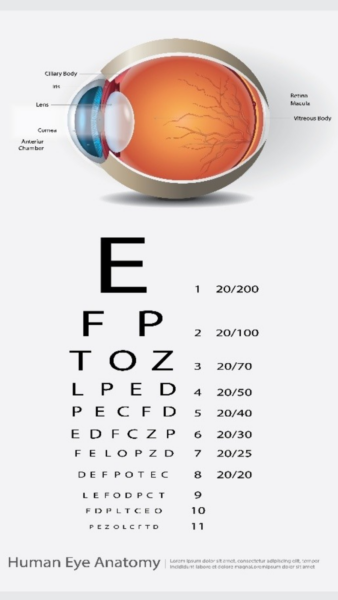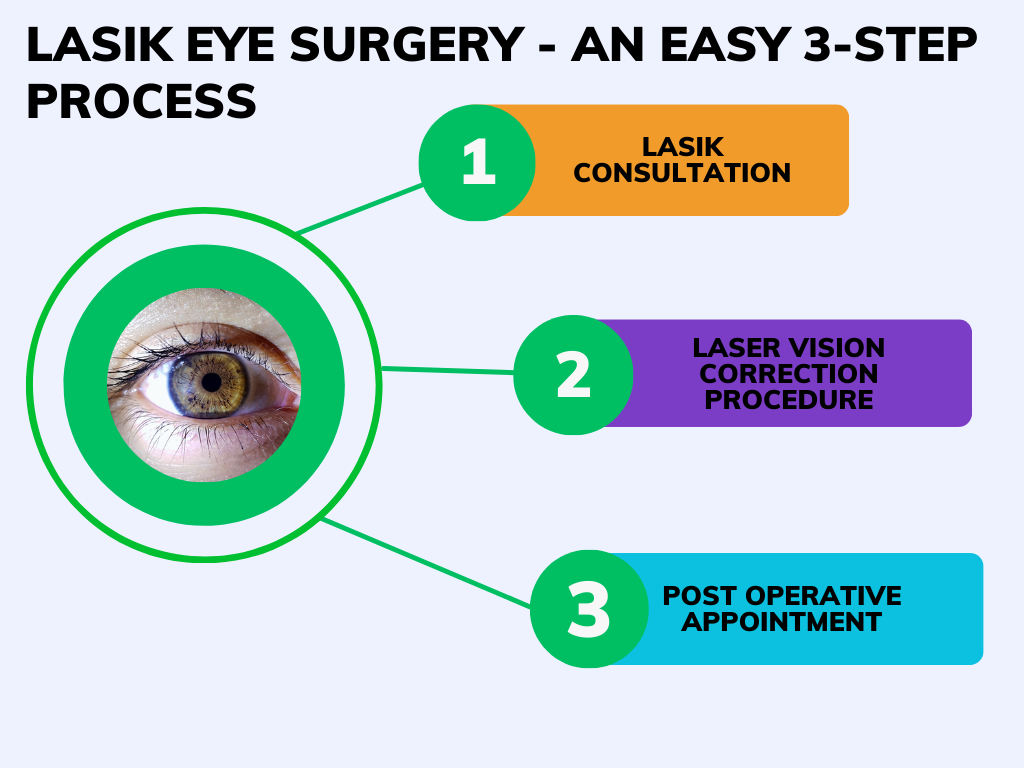If you’re considering LASIK eye surgery, you likely have one burning question: “Will I see 20/20 after LASIK?” While the short answer is “most people do,” the complete picture is more nuanced. It’s a valid and important question. Let’s look at the realities of LASIK and what you can genuinely expect.
Understanding 20/20 Vision
Before exploring whether laser eye surgery can achieve 20/20 vision, it’s essential to understand what this term means. 20/20 vision refers to the clarity or sharpness of vision, and it’s a measurement used to assess visual acuity. A person with 20/20 vision can see clearly at 20 feet what a person with normal vision should see at that distance. While 20/20 vision is the goal for many patients, it’s important to note that it isn’t always achievable for everyone, and there are various factors that can affect the outcome.

Success Rates and Outcomes
Numerous studies and clinical trials have examined the success rates of laser eye surgery.
- LASIK often delivers 20/20 vision or better, with over 90% of patients achieving this level of vision after the procedure.
- About 9 out of 10 people (90%) who have LASIK end up with vision between 20/20 and 20/40—without glasses or contact lenses.
- More than 90% of people who get LASIK have 20/20 vision or better post-procedure, according to the Refractive Surgery Council, 2017.
- In addition, LASIK has an unprecedented 96 % patient satisfaction rate – the highest of any elective procedure. (Journal of Cataract & Refractive Surgery, Vol. 42, Issue 8, August 2016, Pages 1224-1234).
It’s important to understand that while 20/20 vision is a common result, some patients may achieve vision slightly worse than 20/20 (such as 20/25 or 20/30), which can still be perfectly functional for most daily tasks. The exact outcome can vary based on the aforementioned factors, and patients should have realistic expectations before undergoing surgery.
Factors That Affect the Outcome
Several factors contribute to the success of laser eye surgery and its ability to achieve 20/20 vision:
- Age: Younger patients typically have better outcomes than older patients because their eyes are healthier and more adaptable to the surgical changes.
- Refractive error: Those with mild to moderate myopia (nearsightedness), hyperopia (farsightedness), or astigmatism tend to have better results than individuals with more severe prescriptions.
- Corneal thickness and shape: Laser eye surgery reshapes the cornea, so having enough corneal thickness is crucial. Thin or irregular corneas may impact the surgery’s success.
- Eye health: People with underlying eye conditions like cataracts, glaucoma, or dry eye may not be suitable candidates for surgery, or their results could be compromised.
- Healing response: Everyone heals differently, and some people may experience complications or less-than-optimal results due to how their bodies respond to the surgery.
According to Dr. Brewer, “If you are capable of seeing 20/20 with your glasses and contact lenses, then you are capable of seeing 20/20 or better after LASIK…”
Long-Term Vision Stability and Potential Enhancements
While many patients experience stable vision for years following laser eye surgery, some may experience gradual changes in visual acuity over time. Factors such as aging and hormonal fluctuations can influence long-term vision stability. Enhancement procedures may be necessary to address residual refractive errors or changes in vision. We advocate for regular annual check-ups to monitor vision and address any concerns. We provide detailed information regarding the potential need for enhancement procedures and the factors that influence long-term vision stability.
Benefits and Limitations of Laser Eye Surgery

Laser eye surgery offers several benefits, including the potential for clearer vision, freedom from corrective lenses, and a relatively quick recovery period. Some of the specific advantages include:
- Reduced dependence on glasses or contact lenses: The primary reason most people seek laser eye surgery is to reduce their reliance on glasses or contact lenses. Many patients achieve functional vision without the need for corrective eyewear.
- Improved quality of life: For many, the ability to see clearly without glasses or contacts enhances daily activities, such as driving, sports, and even traveling.
- Minimal downtime: Compared to traditional eye surgeries, laser eye procedures offer a much faster recovery, with many patients returning to normal activities within a day or two.
However, there are also limitations to consider:
- Not everyone is a candidate: Certain conditions such as dry eyes, severe refractive errors, or other health issues may disqualify a person from undergoing surgery.
- Risks and complications: While laser eye surgery is generally safe, complications can occur, including dry eyes, glare, halos, or infections. In rare cases, the procedure may not result in optimal vision, and additional treatments may be needed.
- Long-term results: While the majority of patients achieve lasting results, some may experience changes in their vision over time due to aging or other factors, such as presbyopia.
LASIK Eye Surgery- An easy 3 step process

What’s Next for Me?

Laser eye surgery offers an effective solution for many individuals seeking to improve their vision. The goal is to reduce the dependence on glasses or contact lenses, and for most patients, the results are highly satisfactory. While achieving 20/20 vision is a common result for many patients, it’s important to understand that each person’s experience may vary. By consulting with a qualified ophthalmologist and setting realistic expectations, you can make an informed decision about whether laser eye surgery is right for you.

Find a LASIK Surgery Location Near You
We’re located nationwide – it’s easy to find a LASIK Vision Center near you.
Sources
American Academy of Ophthalmology. (Boyd, 2024). LASIK — Laser Eye Surgery. Retrieved from https://www.aao.org/eye-health/treatments/lasik#:~:text=Vision%20after%20LASIK,monovision%20with%20contact%20lenses%20first
American Optometric Association. (n.d.) Visual Acuity: What is 20/20 vision? Retrieved from https://www.aoa.org/healthy-eyes/vision-and-vision-correction/visual-acuity#:~:text=Visual%20Acuity%3A%20What%20is%2020,be%20seen%20at%20that%20distance
Mayo Clinic (2023).LASIK surgery: Is it right for you?Retrieved from https://www.mayoclinic.org/tests-procedures/lasik-eye-surgery/in-depth/lasik-surgery/art-20045751#:~:text=In%20general%2C%20most%20people%20who,has%20a%20good%20track%20record.
Refractive Surgery Council. (October, 2017). What is the success rate of LASIK? Retrieved from https://americanrefractivesurgerycouncil.org/laser-eye-surgery-lasik-success-rate/
Disclaimer: This information is for general knowledge and informational purposes only and does not constitute medical advice. Consult with a qualified healthcare professional for diagnosis and treatment of any medical conditions.
Categories:



